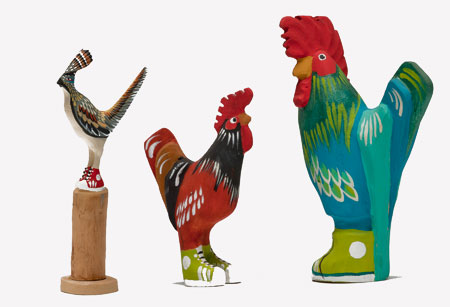| |
|
Matthew was born in Montezuma Creek, Utah, to Hugh and Helen Yellowman. As a young boy, he bounced from town to town. The constant moving led to a variety of experiences and to what he describes as an ecumenical upbringing, a memory which elicited a laugh from Matthew. Today, he follows the traditional teachings of his parents as well as the Native American Church. He is interested in passing along not only the traditional ways to his two children, Camille and Lamont, but his art experience as well.
His artistic abilities showed themselves at an early age. Matthew finished high school in Ogden, Utah, and had six months vocational training in masonry. He has done oil paintings as well as decorated ceramics. He did not start carving wood until 1996 when he got together with fellow folk artist, Rena Juan. He watched Rena carve for awhile, but was compelled to develop his own style of carving. Today, the two of them work together bouncing ideas off of one another and chuckling as an idea evolves into a carving. Their inspiration is all around them as they continuously search for new ideas.
Woodcarving is a real business for them. They start with pieces of cottonwood they find in washes in and around the Navajo reservation. They look at the wood and see what's "inside". They use a chainsaw to rough cut the wood, then work out the details using dremels, die grounders, and sanders. Carbide bits are used and different grades of sandpaper for finishing the pieces. They typically work on a number of pieces at once, finishing all of the woodwork before cleaning up all of the shavings in order to start painting. Acrylic folk art paints are used to achieve the variety of tones and shading in their pieces.
Matthew was making carvings of Native American people from other parts of the country, but was encouraged by Rena to depict Navajo people. Never sketching his ideas, he starts working the wood to create sometimes very complicated movement such as a bucking bull or a man on a trotting horse. He also likes carving the yei but is careful not to offend in creating this special intermediary of the Navajo people.
|

